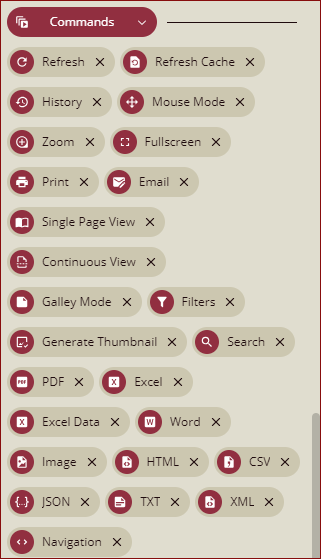- Getting Started
- Administration Guide
- User Guide
- Developer Guide
Info panel
While designing the report, you may also require making some additional settings such as default view settings, export settings, caching settings, the height of the parameter panel, etc. Info Panel in the report designer allows you to set this report information.
To set the report information properties, follow the steps given below:
On the Document/Resource Portal, select the report for which you want to set the information properties, click the Ellipses button next to the selected report, and select the Edit option from the list.
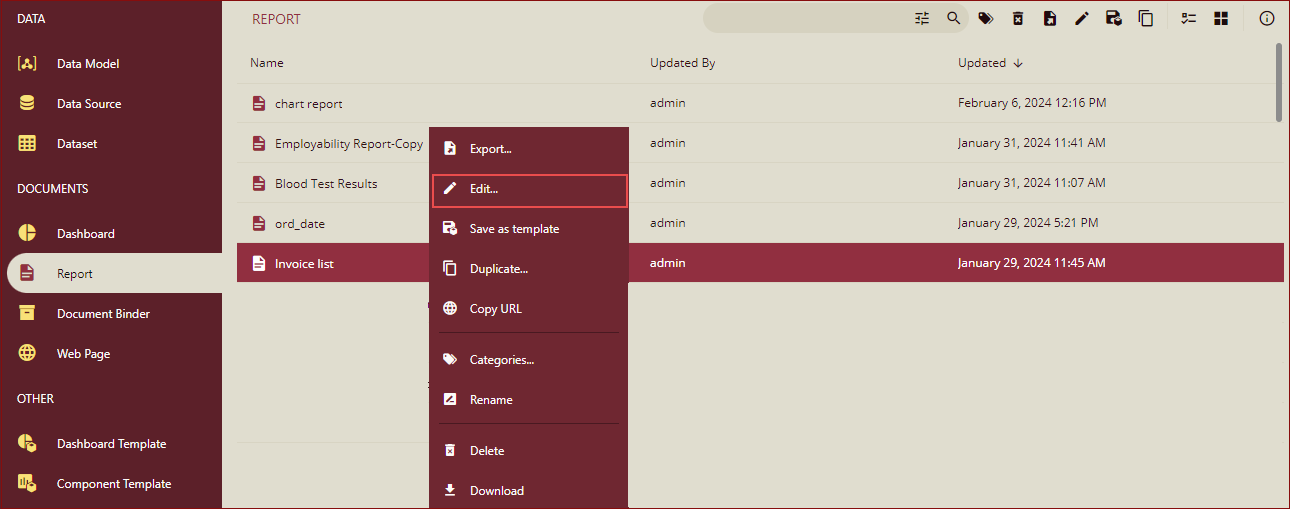
The report designer is displayed. Click the Info button on the top-right corner of the designer.
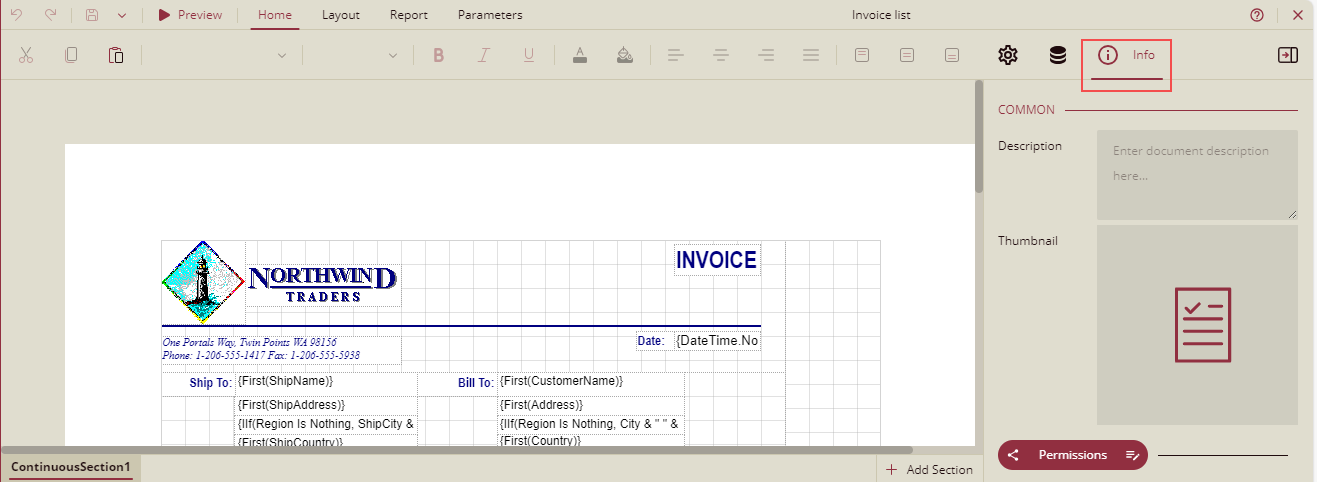
The following properties are displayed.

Property Description
Common
Description: Add the report description here.
Thumbnail: You can add a thumbnail from here by clicking and selecting the thumbnail image.
Permissions: By clicking the Permissions button, you can select the roles and their permissions.
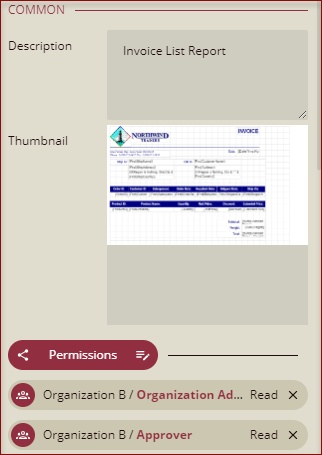
Preview
View Mode: You can set the default view mode for the report from here. It has two options: Single and Continuous. By default, the value is set to Single. You can select the Continuous option to view the report continuously by scrolling down as shown below.
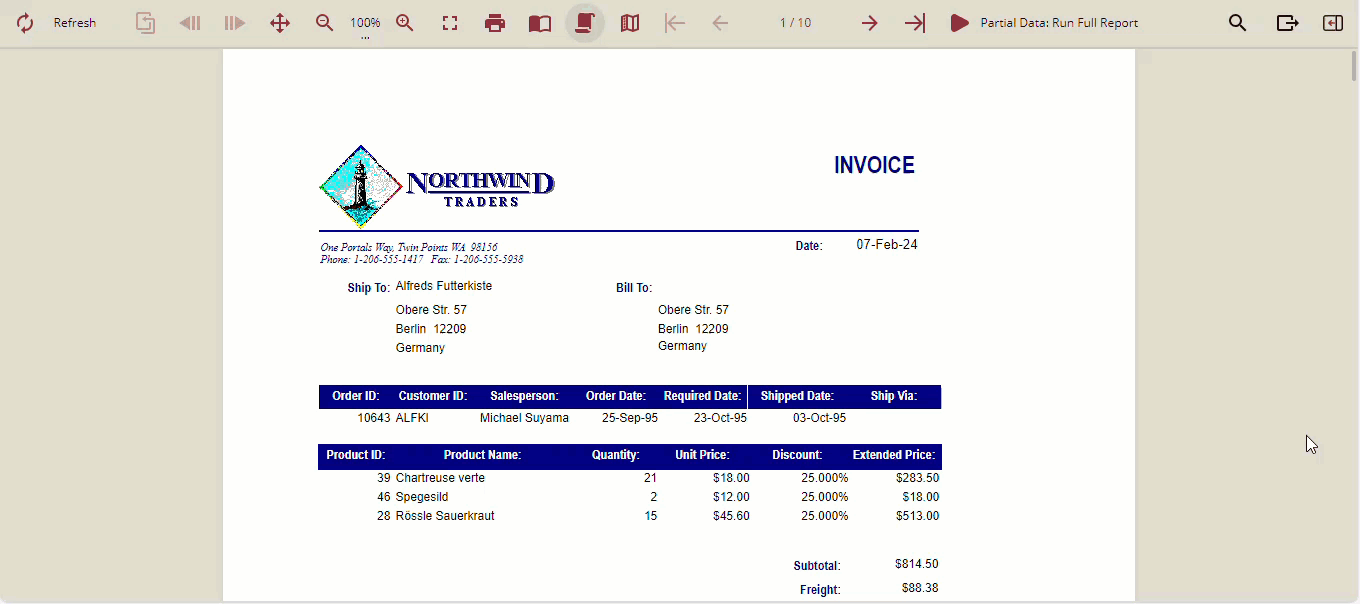
Fullscreen: On previewing the report, by default, the action bar is at the top. If you set the Fullscreen mode to True, the action bar comes at the bottom. You can click the Expand Toolbar button to display all the settings as shown below.
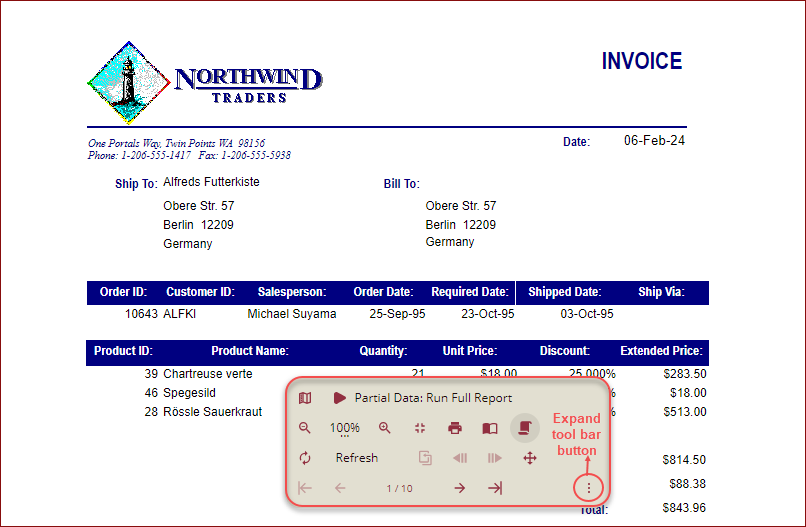
Top Parameter Panel Height: You can set the default height of the report parameter panel when displayed above, with a minimum value of 70 for the height of one control. You can also adjust this height by dragging the mouse during the actual preview.
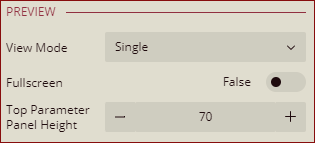
Jump To Report
Open Mode: Sets the style when opening a new document while jumping to another report. It has three forms: Embedded, Dialog, and New Window.
Display Mode: Sets the display type of the new dialog box. It has three options: Default, Page, and Galley.
Zoom Mode: Sets the zoom mode of the new dialog box. It has three options: Default, Fit to Width, and Fit to Page.
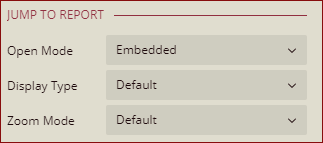
Jump To URL
Open Mode: Sets the style when opening a new document while redirecting to a URL. It has two options: Dialog and New Window. By default, it is set to Window. Select the option Dialog to reopen a dialog box to display the target URL page. In this case, you can set the size of the dialog box and other details, as shown below:
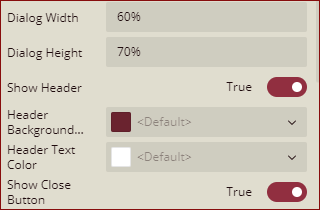
Select the option New Window to reopen a window to display the URL page, and there is no need to set the opening style.

Internationalization
Language Resource File: You can load the language resources for a report. Refer to the section Internationalize Labels of Custom Parameter Controls for more details.
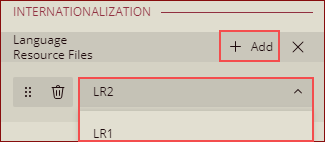
After adding the language resources, the Language Resource Files field will be displayed as shown below.

Export
Export: When you export a report, the name of the exported file is fixed. But sometimes we need to customize the file name to distinguish it. The name of the exported report will change according to the value of the current parameter, which will change dynamically. The Export property is used to achieve this requirement. You can click the Add button and enter the expression directly, or you can click on the Data Binding (small square) option on the right to add an expression.
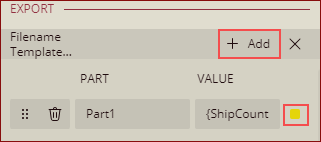
After adding the expression, the Filename Template Parts will show the item as shown below.

Caching
Allow Caching: By default, it is set to No. If you set this property to Yes, then you need to set up report caching. For details about Report caching refer to the section Report caching
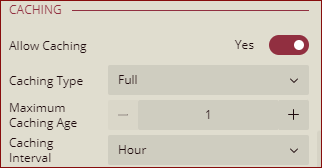
Commands
Commands: You can select/deselect all the available commands for the report here, by clicking the checkbox.

Once you select the checkboxes, the selected commands will be displayed as shown below.
